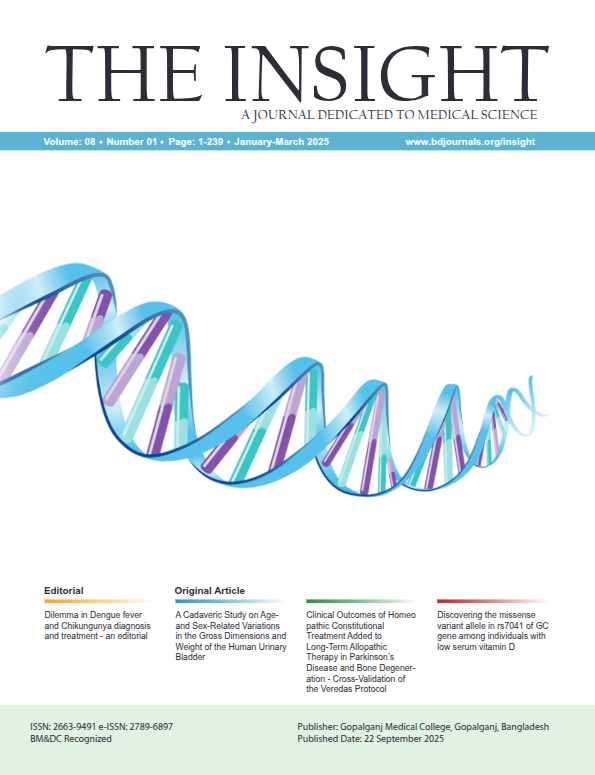Abstract
Introduction: Frequent relapse nephrotic syndrome (FRNS) in children poses significant challenges in management due to its recurrent nature and the impact of various precipitating factors. This study aimed to evaluate the triggering factors contributing to relapses in children with FRNS and to compare the relapse rates and baseline characteristics between case and control groups. Methods and materials: This cross-sectional analytic study was conducted at the Department of Paediatric Nephrology, Bangabandhu Sheikh Mujib Medical University, Dhaka, from October 2015 to June 2016. Data analysis was done by SPSS for Windows programmed version 16.0. Sixty (60) study samples were taken. Result: The study included 60 children, with a mean age of 5.28 ± 2.03 years in the case group and 5.77 ± 2.50 years in the control group, showing no significant age difference (p = 0.412). Males predominated in both groups, with a male-to-female ratio of 1.85:1 in cases and 1.5:1 in controls. Socioeconomic status was comparable between groups, with most participants from poor or middle-class backgrounds (p = 0.164). Among the case group, common relapse-triggering factors included asthma (30%), UTI (25%), and URTI (25%). Relapse occurred in 47.5% of the case group and 40% of the control group over six months, with no statistically significant difference (p = 0.068). Conclusion: Asthma, UTIs, and upper respiratory infections triggered relapse in 30%, 25%, and 25% of children with frequent relapse nephrotic syndrome, but their impact on treatment outcomes was similar across groups.

This work is licensed under a Creative Commons Attribution 4.0 International License.
Copyright (c) 2025 The Insight





 PDF
PDF